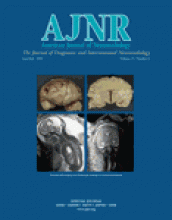Memory is the diary that we all carry about with us.Oscar Wilde (1895–1941)
Memory is a complex phenomenon. Its study has spawned a diverse terminology. Signoret (1) suggested that memory could be divided into five separate processes: a holding process for momentary retention; an acquiring process that encodes material; a storing process (consolidation) that permanently preserves the memory; a retrieval process; and a scanning process allowing for the recall of relevant material from a panoply of stored memories. In clinical practice, a specific memory disorder may arise by contributions of more than one of these processes.
The amnestic syndrome is characterized by an impairment of recent memory, preservation of the ability for immediate recall, and preservation of remote memories. It has been referred to as Korsakoff syndrome on the basis of the description of the memory disturbance accompanying alcoholic peripheral neuropathy by S. S. Korsakoff in a series of papers published between 1887 and 1891. This memory disorder results from a discrete inability to encode and store new memories. It has been reported in association with thiamine deficiency, cerebrovascular disorders, head trauma, and anoxic injury. The cognitive functions, language, and behavior of persons with an amnestic syndrome may remain perfectly normal. The anatomic basis of this disorder has been a source of controversy. Pathologic studies of alcoholic patients with Korsakoff syndrome invariably demonstrated gliotic lesions of the mammillary bodies. Many authorities attributed the memory disturbance to these lesions; however, lesions of the mammillary bodies were often present in the absence of the amnestic syndrome. Subsequent studies demonstrated that lesions of the dorsal medial nuclei of the thalami correlated with the amnestic syndrome in alcoholic patients (2, 3) and the role of the mammillary bodies in the memory disorder was largely, although not entirely, dispelled (4–6). The importance of the dorsal thalamus to recent memory acquisition was corroborated by other observations, such as the appearance of an amnestic syndrome following penetrating trauma to this region (7).
In this issue of the AJNR, Yoneoka et al report on a patient with bilateral isolated lesions of the mammillothalamic tracts (MTT) that were associated with Korsakoff syndrome. They propose that bilateral lesions of the MTT are sufficient to cause an amnestic syndrome. Discrete bilateral lesions of the MTT are rare, probably explaining why this association had not been previously reported. The finding should not, however, be surprising. The mammillary complex reciprocally innervates the hippocampus and via the MTT communicates with the anterior thalamus from which fibers pass to the hippocampal formation via the cingulate cortex. The role of the hippocampal-limbic system in the acquisition and storage of new memories is well established. Scoville and Milner (8) demonstrated that a permanent impairment in memory followed bilateral medial temporal lobe resection that extended sufficiently posteriorly to damaged portions of the anterior hippocampus and hippocampal gyri, and D’Esposito (9) demonstrated bilateral lesions of fornix may also result in an amnestic syndrome. Most evidence indicates that bilateral lesions of segments of the temporal or diencephalic or both limbic systems are necessary to impair learning. This case report adds one more site of the hippocampal-limbic system—namely, the MTT—from which bilateral lesions may result in amnesia.
References
- Copyright © American Society of Neuroradiology












